The origins of what we may now recognise as the public house began to appear during the Roman colonisation of Britain as places where travellers could obtain rest and refreshment on the new road network.
In 1892 its recorded that there were nine public houses in Eye, two which were ‘beer houses’ (explained below):
- The Black Horse
- The Blue Boar
- The George and Dragon
- The Greyhound
- The Oak Branch
- The Red Lion
- The Spade and Shovel
- The Wheatsheaf (or Crowpeck)
- The White Hart.
Local historian, David Fovargue has said ” It is well known that in 1908 there were 9 licensed premises in Eye. In actual fact there were 10. Another premises in Eye Green was licensed to sell beer. Where was it – that’s another story.”
Alcohol licensing was first introduced in England in 1828 with the Licensing Act under the guise of curbing public drunkenness. It consolidated and updated previous laws for the sale of alcohol. The legislation created a new, more accessible category of licensed premises known as Beer Houses. At the time, beer was widely regarded as a harmless, nutritious, and even healthful beverage. Under the Act, any rate-paying householder could, for a one-time fee of two guineas (equivalent to about £159 today), obtain a license to sell beer or cider from their own home, and even brew it on-site. However, Beer Houses were not allowed to open on Sundays. Beer was typically served in jugs or poured straight from tapped wooden barrels placed on a table in the corner of the room. The venture was often so profitable that some owners could afford to purchase the house next door for their residence, converting every room of their original home into bars and lounges for customers.
Broughton’s Beer House (The Black Horse) in Eye was one such building. An edition of the Peterborough Advertiser in November 1860 reported that “Jackson, p.s., stated that on Sunday 4th November he went in plain clothes to Broughton’s house, and saw the landlord with a half-pint of beer in his hand. There was a man from Thorney sitting with half-pint mug before him. Four other men were present, and there where mugs on the table” it then continues; “Defendant admitted that he had only had the house a fortnight, and being a shoemaker, was obliged to see his customers when they came. Ordered to pay 14s expenses, without a conviction”.
The Wine and Beerhouse Act 1869 reintroduced the stricter controls of the previous century. The sale of beers, wines or spirits required a license for the premises from the local magistrates and restrictions on the hours Public Houses could sell alcohol were created. This was further compounded by the Defence of the Realm Act 1914 which set the 11pm limit on the sale of alcohol throughout the rest of the 20th century. The Licensing Act 2003 repealed the previous licensing laws for England and Wales, taking responsibility away from magistrates and placing it in the hands of local licensing boards. The 2003 act also led to the rise of the micropub. One example is the popular Frothblowers micropub in Werrington which won Cambridgeshire CAMRA Pub of the Year in 2019.
In 1982 there were 67,800 public houses in the United Kingdom. By 2024 this had dropped to approximately 45,800 and they are still in decline. There’s no doubt the demographic change and people’s changing lifestyle has put enormous pressure on the traditional local pub. Nowadays you can have a drink at a restaurant, bar, hotel or club as well as the local pub. On top of this has been the rise of the internet, the ever-widening array of alternative leisure pursuits and the increase in cheap supermarket alcohol so more people are drinking at home. In 1987 the average price of a pint in the pub was about a £1, today its getting close to £5. Added to this in 2007 the smoking ban in public places came into effect. which some say was the ‘final nail in the coffin’ for the local pub. In 2007 the village still had four working pubs, The Greyhound, The Blue Boar, The Spade and Shovel and The Red Lion, today only the Blue Boar remains open.
Can politicians save Britain’s pubs?
Campaign for Real Ale (CAMRA)
Is This The End Of The Great British Pub?
Below is an 1887 map showing the centre of Eye and three of the pubs. At that time the Spade and Shovel looks like it’s sitting on the edge of what would have made a great village green.
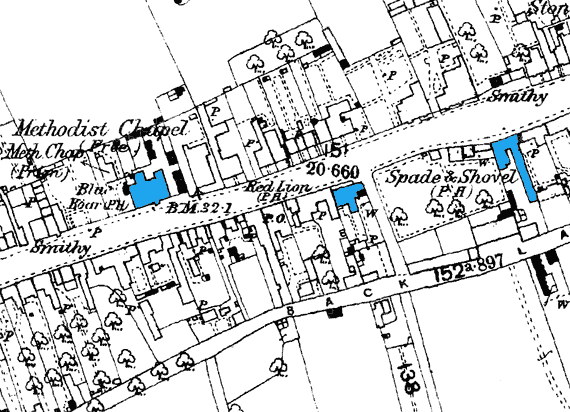
The Blue Boar
This is the oldest surviving pub in Eye, the building is estimated to date back to the 17th Century. It was an established stop on the coaching route from Peterborough to Wisbech and King’s Lynn.
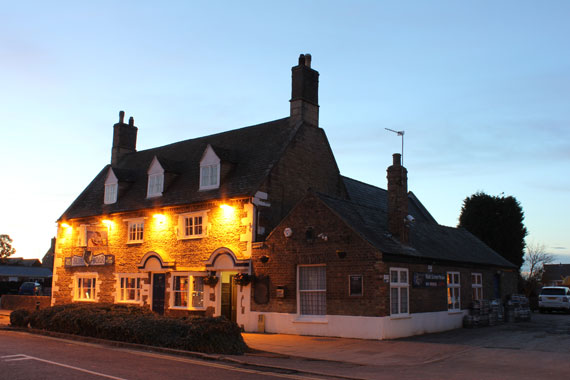
The blue boar is a heraldic reference to the Earl of Oxford. The white boar similarly refers to Richard III (1452 – 1485). It is said that after the defeat of Richard and the Yorkists at the Battle of Bosworth (1485), many White Boar signs were hastily painted blue since the Earl of Oxford was a leading supporter of the Lancastrian cause.
The Red Lion (Closed)
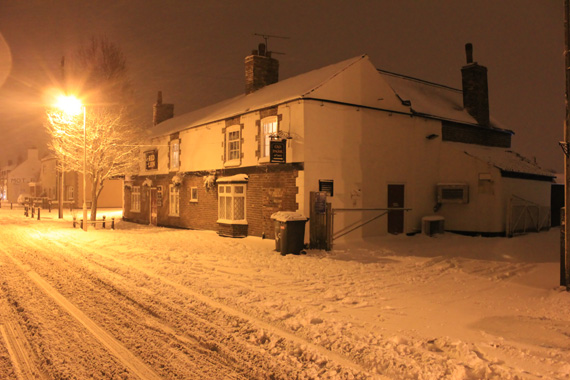
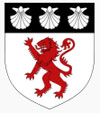 The Red Lion is one of the most common pub names in England. The name of the local pub probably comes from the Duke of Bedford, whose family arms shows a red lion. Having entered royal service in about 1506 Sir John Russell served in the army of Henry VIII in France and was knighted for valor in 1522. After the dissolution of the monasteries, he was given ownership of the land around Eye as part of his reward for services to the crown.
The Red Lion is one of the most common pub names in England. The name of the local pub probably comes from the Duke of Bedford, whose family arms shows a red lion. Having entered royal service in about 1506 Sir John Russell served in the army of Henry VIII in France and was knighted for valor in 1522. After the dissolution of the monasteries, he was given ownership of the land around Eye as part of his reward for services to the crown.
In October 1891 The Peterborough Standard reported “Mr Steels, of the Red Lion, provided his customary harvest supper on Monday. Over 50 sat down, and a pleasant evening was afterwards spent.” Bygone times…
The Red Lion closed 2014. Its now a Co-op. The new store opened on April 15 2016.
The Spade and Shovel (Closed)
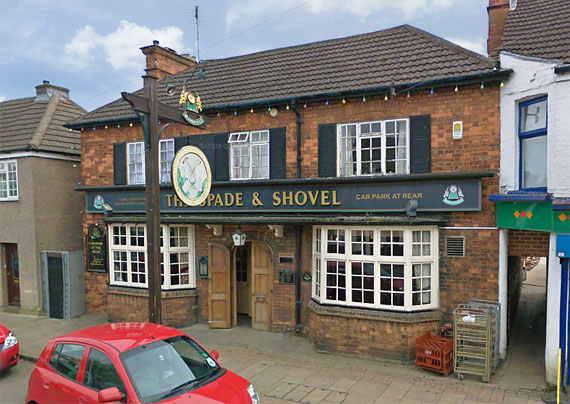
The Spade and Shovel is a late 19th-century building on the high street. The original pub was thatched but a large fire destroyed this earlier building. The Peterborough Standard of October 1891 reported a large fire and total destruction of a public house in the village. This was the Spade and Shovel owned by Messrs, Goodwin, brewers of Newark-on-Trent. At the time the landlord was Mr George Reynolds who had been a tenant for just two years. The Peterborough Standard reported that “The building was a very old one, and, like the majority of others in the street was thatched”. Mr Reynolds had smelt the burning on a Sunday and after a careful search had decided that something was amiss with the Chimney. Smoke was smelt again during the evening but its position could again not be discovered.
At 3 am Monday morning Mr Forth who lived opposite the pub noticed that the roof was on fire and raised the alarm. Around 6 am a boy was dispatched by pony to Peterborough to summon the Fire Brigade, by the time they arrived the roof had already fallen in taking some of the inner walls with it and all they could do is prevent the fire spreading to adjoining properties. Water was drawn from nearby wells and although the Spade and Shovel was beyond help, the thatched cottage next door was saved due to the efforts of those trying to prevent the spread.
The fire was found to be caused by a wooden beam that ran into the open chimney. Just about everything was destroyed, the heat was reported to of been so great the iron bedsteads were “twisted and bent about until they were almost unrecognisable”. Mr Reynolds estimated the loss to be around £250, equivalent to £250,000 today. The pub was re-built within a few years and reopened for business.
With the decline in pubs across the country the pub closed in 2011. It was sold in 2012, the top floor is now flats and the ground floor is a takeaway and separately run cafe.
The Greyhound
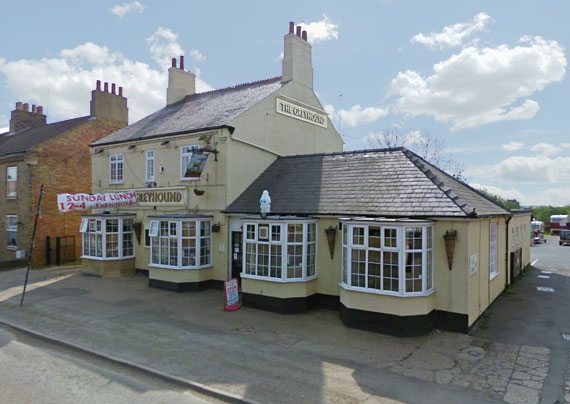
The Greyhound is on Crowland Road. Originally the pub was the building on the left while the smaller single-storey building to the right was a post office and grocery. An extension was added to the rear in 1979 and a further extension added in 2000.
In January 1892 just 15 months after the fire at the Spade and Shovel the Greyhound suffered a similar fate. The Greyhound at the time was one of the oldest buildings in the parish and the Landlord, Mr F. Hunting had been Landlord for a quarter of a century. The building was thatched with a bay window, upstairs it had four bedrooms, and at the rear was the club-room and farm-yard. Adjoining the public-house was a grocery and general stores also run by Mr Hunting.
The fire was discovered by William King, a gamekeeper who was crossing a nearby field. After a closer investigation he saw that the roof was already well alight. The Peterborough Standard of 11 January 1892 reported “He walked into the house and almost dumbfounded those who were present with the remark, “Don’t you know the house is on fire?” The two sons of Mr Hunting then moved documents and furniture out of the building while Mr King ran down the road to get the Fire Brigade, who arrived 10 minutes later. Although the fire engine attempted to fight the fire the nearby water supply ran out, and from that point, the building was doomed. Once started, the fire had spread very rapidly through the thatch and within half an hour of the fire being discovered the roof fell in carrying with it the part of the inner walls. The fire was put out within two hours and the grocery store next door was saved.
The damage was estimated to be around £1000 with over £250 worth of stock lost. The following day all that was left were four blackened exterior walls. The fire, similar to the one at the Spade and Shovel was thought to have originated in one of the main support beams. As it was winter the fireplace had been kept alive for weeks and it was suspected that the heat in the chimney had spread to the thatch which then caught alight.
Although the fire was fierce the four exterior walls and even the sign on the front only had minor damage. The pub was rebuilt within a few years using the existing walls and structure.
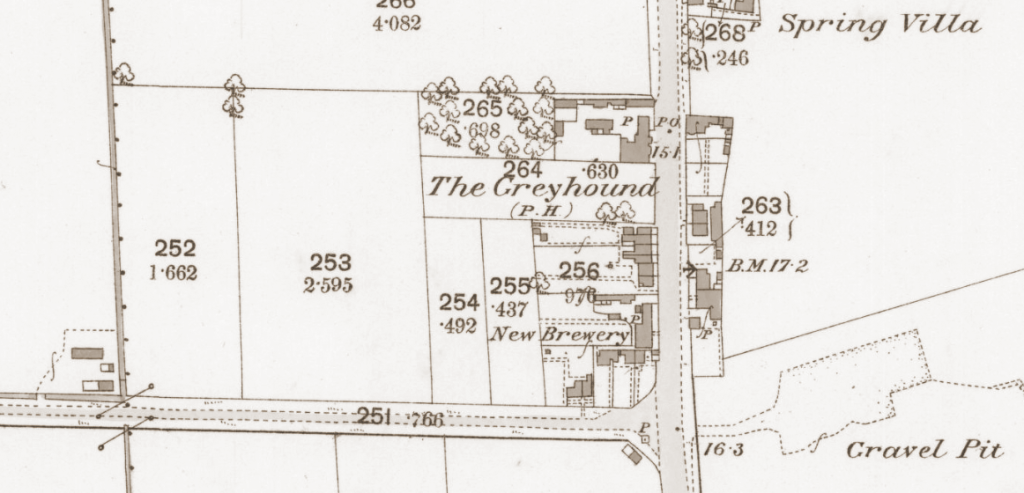
In 2009 the pub closed, and became the Indian restaurant called The Five Spice. This closed and became the Maccaloo Gastropub in 2016. In 2017 it was taken over by renown chef Damian Wawrzyniak and renamed the House of Feasts. This also eventually closed in 2022 became an Indian restaurant called the Marigold Tavern in 2022. The village chip shop and a small shop is also located to the site. Crowland Road where the pub is located used to be a main route from Eye to Crowland, when new A16 to Spalding opened in 2011 passing traffic was greatly reduced.
The White Hart: The White Hart was on the corner of Peterborough Road. It reopened as Riva Italian restaurant. This closed in 2017 and reopened as a Mattoni Restaurant.
|
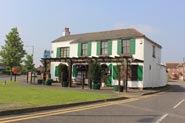 |
|
|
|
| The Oak Branch: This pub was the opposite side of the High Street from the entrance to Cartmel Way. The original building was demolished but the house that sits on the site of the Oak Branch still retains the name. | 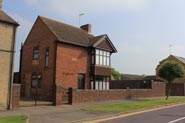 |
|
|
|
The George and Dragon: The original George and Dragon was located close to the corner of Eyebury Road and Thorney Road. Around the 1860s the premises was sold and it moved down the High Street. the building there today is not the original pub building.
|
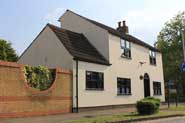 |
|
|
|
The Wheat Sheaf (or Crowpeck).
|
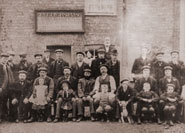 |
|
|
|
The Black Horse:
|
|
Thank you to David Fovargue for the updates.

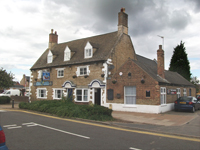
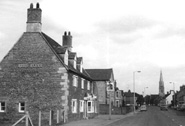
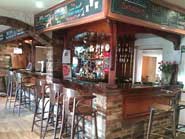
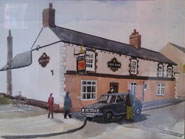
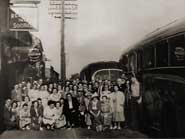
I am trying to trace an old friend . He was a landlord at a pub in Eye around 1983/4. His name is Darrel Taft . He was my best man in 1966 . If anyone has any info. ,please advise me on my e mail address . Thank you.
Sir, I used to drink in the Spade and Shovel when Darrel and Muriel were Landlord and Landlady. Darrell’s daughter Sally married Mick Jarvis who trades as M&A Roofing (or used to Until Tony died recently) I would imagine it would be possible to locate M&A Roofing via the Internet and then from there locate Darrel. I see Mick and Sally fairly regularly in Mattoni’s – formerly The White Hart featured in this article. I think Sally said Darrel was still alive when I enquired after him some time ago. If not – I have Mick’s tel no. Good luck !
Hi, does anyone remember the original George and Dragon on the corner of Thorney and Eyebury Road?
If so do you know when it stopped trading and was converted to a house? Thank you.
Very interesting article. Broughton’s beer house mentioned above was actually the Black Horse. Thomas Broughton was born at Eye, in 1837. His parents Thomas (b1806) and Susannah (b1813) Broughton. He married Mary Norman (b1829 at Eye) in 1859. It is believed he took over the beer house in October 1860. His actual trade was Cordwainer. He left the BH in1869 and died in 1901.
It is well known that in 1908 there were 9 licensed premises in Eye. In actual fact there were 10. Another premises in Eye Green was licensed to sell beer. Where was it – That’s another story.
Thank you for the update, I’ve amended the page and quoted you in the content.
The original George and Dragon was not the house on the corner that exists today. The G + D stood back from the Thorney Turnpike and had a butchers shop attached. The property was sold in 1864 and that is when I believe it may have been demolished and the present building built and perhaps turned into a grocers. It had been a business for 40 years previously. The G + D moved to a building down West End the same year. John Cooper was the landlord at the time.
Hope this helps
Dear EyePadmin Thank you for updating your website and including more of Eye’s history.
The 10th premises licensed to sell beer was Northam House (Not Northam Grange) which is now No 17 Crowland Road. The licensee was a Walter Mayes who moved to Eye between 1904 and 1906. His wife had a very unusual name Tryphena. Walter was a carrier and beer seller. The licence lapsed in 1927. By that time Walters daughter Elsie had married Hugh Porter a motor engineer in 1925. Older people in Eye will remember Porters garage at Eye Green and the Fina petrol pumps on the edge of the lay-by in front of the house. The business was called Northam Garage.
Walter Mayes died in 1931. Hugh Porter continued the business until his death in 1963. Elsie died in 1976.
Regards
David Fovargue